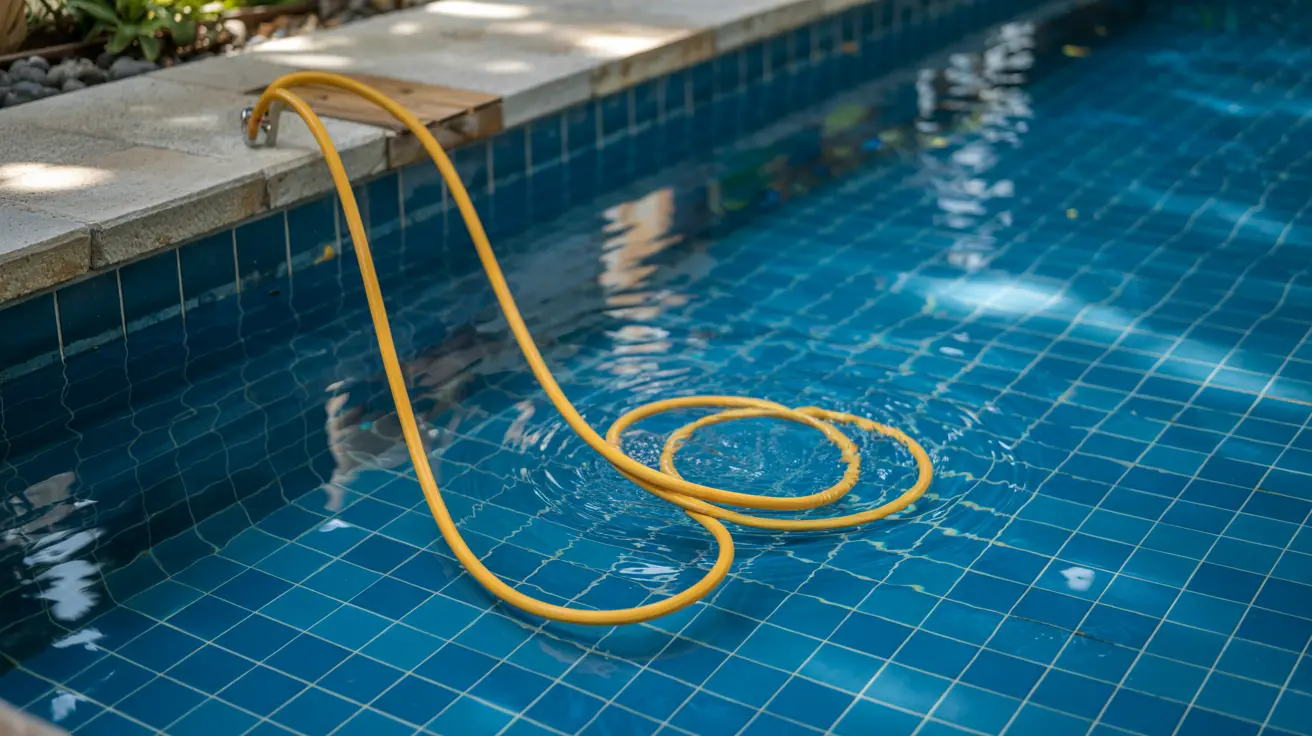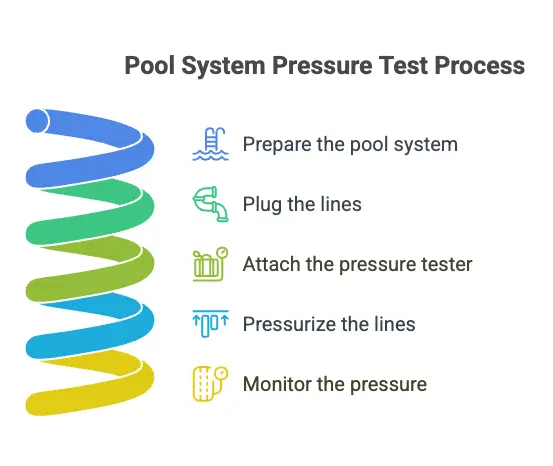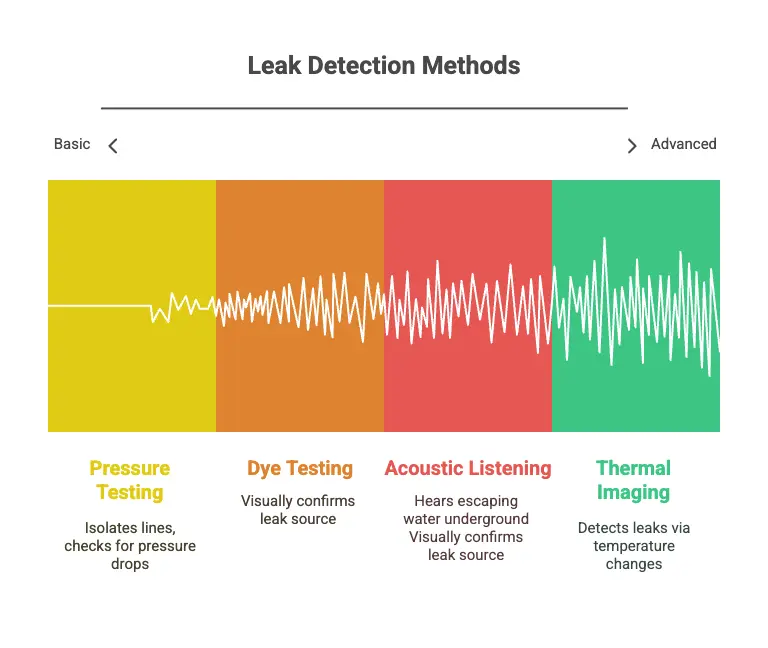Pressure Testing Pool Leaks: The Ultimate Guide to Pool Leak Detection in Austin

Is your swimming pool losing water, or do you suspect a hidden leak in your pool lines? Pressure testing pool leaks is the gold standard for pinpointing plumbing leaks before they cause costly damage. This article explains why pressure testing is essential, how it works, and why Leak Finder Pro is Austin’s leader in pool leak detection. If you want to protect your investment and keep your pool in top shape, read on!
What Is Pressure Testing in Pool Leak Detection?
Pressure testing is a method used to find leaks in your swimming pool plumbing system. The process involves sealing off sections of the pool lines, then using a pressure tester to introduce air or water into the pipes. By monitoring the pressure gauge, technicians can see if the system holds pressure or if there’s a pressure drop, which signals a leak within the plumbing lines. This technique is essential for accurate leak detection, especially for underground or hard-to-see pipes.
Why Is Pressure Testing Pool Lines So Important?
Pressure testing is crucial for several reasons:
- Prevents water loss: Undetected leaks can cause significant water loss, leading to high utility bills and wasted resources.
- Protects pool infrastructure: Leaks can erode the soil around the pool and damage the structure, especially in concrete pools or around the pool deck.
- Maintains water quality: Leaks can let contaminants into the pool, affecting water balance and pool care.
- Saves money: Early leak detection means less expensive repairs and less damage to your pool system.
In a city like Austin, where water conservation matters, pressure testing helps you spot and repair leaks before they escalate.
How Do Leaks Develop in Swimming Pool Plumbing?
Leaks in swimming pool plumbing can develop from a variety of sources:
- Aging pipes: Over time, PVC pipes can crack or become brittle, especially if exposed to shifting soil or high pressure.
- Faulty fittings or threads: Poor installation or worn-out fittings can create weak spots in the plumbing system.
- Ground movement: Soil settling or shifting can stress pipes and create leaks around the pool.
- Improper winterization: Infrequent pool maintenance or improper closing can cause pipes to freeze and crack.
No matter the cause, a professional pressure test can help locate the leak before it causes major water loss.
What Are the Signs Your Pool Is Leaking?
Common signs that your pool is leaking include:
- Unexplained water loss (more than 1/4 inch per day)
- Air bubbles in the return lines or pool pump
- Wet or soggy spots around the pool
- Cracks in the pool shell or deck
- Fluctuating water levels or the need to frequently add water
If you notice any of these symptoms, it’s time to test your pool for leaks.
What Equipment Is Needed for a Pool Pressure Test?
To pressure test your pool, you’ll need:
- Pressure tester: A device to introduce air or water into the pool lines and monitor pressure.
- Pressure gauge: Measures the psi in the system and tracks pressure loss.
- Plugs: Used to seal the skimmer, main drain, return lines, and other pipe openings.
- Garden hose or air compressor: To pressurize the system.
- Safety gear: Gloves and goggles for protection when working with pressurized systems.
- LeakTronics equipment: At Leak Finder Pro, we use industry-leading LeakTronics technology for precise electronic leak detection and pressure testing.
How Do You Pressure Test Pool Lines? (Step-by-Step)
Here’s how the pressure test process works:
- Prepare the pool system: Turn off pool equipment, including the pump and heater, to prevent interference.
- Plug the lines: Insert test plugs into the skimmer, main drain, and return lines to isolate the plumbing system.
- Attach the pressure tester: Connect the pressure tester and pressure gauge to the section of pipe you want to test, using the correct thread or fitting.
- Pressurize the lines: Slowly introduce air or water into the line, increasing pressure to the recommended psi (typically 15–30 psi for most pool plumbing).
- Monitor the pressure: Watch the pressure gauge closely. If the system holds pressure, there are no leaks. If there’s a pressure drop, a leak is present in that section.
A steady reading on the pressure gauge means your plumbing lines are leak-free. Any drop in pressure means it’s time to locate and repair the leak.

What Should You Watch for During a Pressure Test?
During the test, pay attention to:
- Pressure holds: If the pressure remains steady for 10–15 minutes, the tested section is likely leak-free.
- Pressure drop: If the pressure drops, it means air or water is escaping through a leak in the plumbing lines.
- Sound or bubbles: Sometimes, adding air after water can help produce bubbling sounds, making it easier to pinpoint the leak location with electronic listening equipment.
Always use the correct psi for your pool’s pipe material (PVC, flex, etc.), and never exceed safe pressure limits.
What Are the Common Pressure Test Results and What Do They Mean?
- No pressure loss: Your pool lines are in good shape—no leaks detected.
- Slow pressure loss: There may be a small leak, possibly at a fitting or thread.
- Rapid pressure loss: There’s a significant leak, often in a pipe, valve, or manifold.
- Pressure loss in one section: Isolate further to pinpoint the exact pipe or fitting that needs repair.
After identifying the leaking section, professional leak detection tools like those from LeakTronics can help locate the exact spot for efficient repairs.
How Does Leak Finder Pro Use LeakTronics for Leak Detection?
At Leak Finder Pro, we combine pressure testing with LeakTronics’ advanced electronic leak detection equipment for the most accurate results in Austin. Our process includes:
- Pressure testing: Isolates plumbing lines and checks for pressure drops.
- Acoustic listening devices: Pinpoint the sound of escaping water, even underground or beneath the pool deck.
- Dye testing and video inspection: Confirm the source of the leak visually.
- Thermal imaging: Detects hidden leaks by spotting temperature changes caused by escaping water.
This leak detection approach means we can find and repair leaks quickly, with minimal disruption to your pool or yard.

Why Trust Leak Finder Pro for Pool Pressure Testing in Austin?
- Local expertise: We know Austin’s unique soil and climate challenges.
- Industry-leading technology: We use LeakTronics equipment for unmatched accuracy.
- Comprehensive service: From pressure testing to repairs, we handle every step.
- Customer satisfaction: Our team is dedicated to fast, effective, and friendly service.
Key Takeaways: Pressure Testing Pool Leaks in Austin
- Pressure testing is the most reliable way to detect leaks in pool plumbing.
- Signs of a leak include water loss, air bubbles, and wet spots around the pool.
- The process involves plugging lines, introducing air or water, and monitoring the pressure gauge.
- A pressure drop means a leak is present and needs further investigation.
- Leak Finder Pro uses LeakTronics equipment for precise leak detection and repair.
- Regular pressure testing and pool maintenance help prevent costly damage.
If you suspect a pool leak in Austin, call Leak Finder Pro for professional, accurate service! Keep your pool safe, efficient, and leak-free with expert pressure testing and leak detection from Leak Finder Pro—Austin’s trusted pool leak specialists.
.png)



